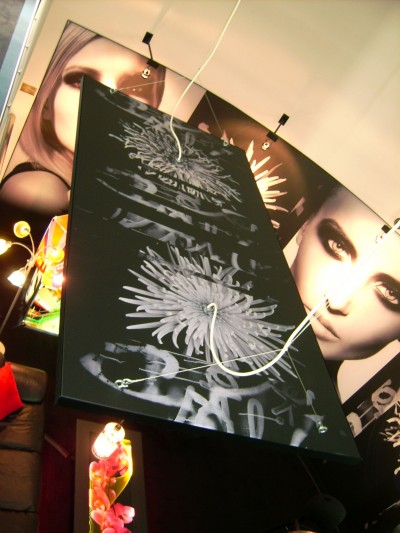Ease of installation and storage
As it is both lighter and less likely to wrinkle than vinyl, soft signage is much easier to install cleanly. It can be hung or stretched in a tension frame.
Then, after their initial use, fabric signs can more easily be stored for future reuse. They are less likely to crack, crease or otherwise be damaged during storage. And if a wrinkle or crease does somehow appear, the material can simply be ironed or pulled flat again.
Lower transportation costs
Another advantage of the lower weight of fabric compared to vinyl is it therefore costs less to transport. In fact, shipping costs can be reduced by as much as a factor of 10 for soft signs compared to ‘hard’ signs, as they can be folded to fit into smaller shipping containers without worrying about damage. A 3 x 3-m (10 x 10-ft) banner may well cost $30 to ship instead of $300.
Lighter materials are especially useful for trade show graphics, since exhibitors pay drayage costs by weight when moving materials on and off the show floor.

Lighter than vinyl and less likely to wrinkle, fabric graphics can be hung or stretched in a tension frame.
Sustainability
Since they are more environmentally friendly than vinyl-based substrates, particularly in terms of a lower carbon footprint, textiles help given companies a greener image.
Also, for the aforementioned reasons relating to storage and transportation, fabric signs are more likely to be reused, whereas other sign materials are often discarded after their initial application.
A range of printers
Display graphics providers who are now planning to add a digital textile printer to their production facility will need to consider a number of factors. There are many options available today, ranging from low-end wide-format inkjet printers—some modified to handle fabrics, others designed from the beginning for use with some textile-based substrates—to high-end super-wide-format industrial printers.
Obviously, these represent a range of investments. Signmakers need to compare the upfront equipment costs with the market value of the results they can achieve. Some of the more expensive super-wide-format printers, for example, can often earn a surprisingly rapid return on investment (ROI), even when they are not used as frequently as a smaller printer.
Dye sublimation
Industrial textile printing has relied on dye sublimation. This process involves dyeing the fabric directly or via heat-transfer paper. Compared to other textile printing methods, dye sublimation is particularly good at producing continuous-tone images and bright colours, resulting in a better-looking graphic. The colourants are highly resistant to abrasion and fading.
Dye sublimation printing is completely odourless. The resulting fabrics drape well and can be washed and dried without wrinkling their graphics. Similarly, the finished product can be folded without cracking or other image damage for ease of shipping, storage and reuse.
While some shops today are entering the soft signage market with a less expensive ‘latex’ durable aqueous inkjet printer first, after they see the full profit and growth potential of the market, an industrial super-wide-format press becomes the logical next step.





